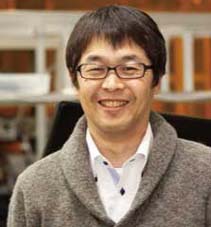Message
IF YOU WORK ON YOUR RESEARCH WITH CURIOSITY AND SHOW INTEREST IN ANYTHING, YOU CAN DEFINITELY FIND A TREMENDOUS NUMBER OF DISCOVERIES. NEVER GIVE UP, AND THEN A BRIGHT FUTURE WILL OPEN FOR YOU
When I was an elementary school student, The Inter-national Science Exposition was held at Tsukuba (Expo '85). In one of the events for the Expo., I posted a letter into the “post capsule”, in which posted letters will be sent back to oneself 16 years later. In that letter, I had written my dream for the future; that is, what I want to be when I grow up. Completely forgotten such a thing, I had devoted myself to kendo during the elementary and junior high school, got interested in theories of relativity and elementary particles in high school, and majored in physics at University of Tokyo. Even at that time, I had not yet imagined I would become a scientist. However, I was attracted by the studies with a professor in the graduate school, and had gone to the doctor course unexpectedly. I think my exciting experiences and intellectual curiosity motivated my research life. Now, I would like to return the favor to my respected professors and prepare better environment for younger scientists to continue with their studies. From the “post capsule”, the letter came back to me having continued with study 16 years later. There has been written that “I want to be a scientist when I grow up.” My dream I described as a child has come true. When I was a primary school student, I could see my future, couldn’t I?!







